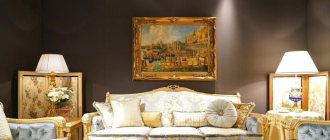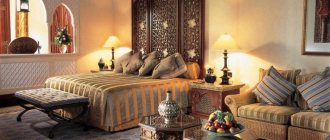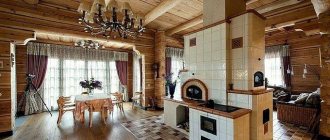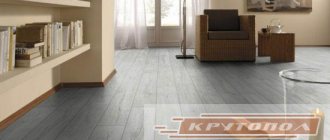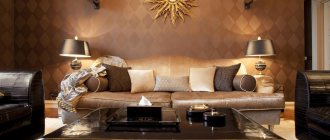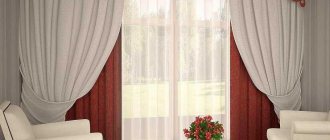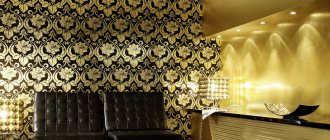Colonial style belongs to the group of classical styles. It received its name in honor of the colonists who, settling in foreign lands, not only brought with them their native traditions in interior design, but also borrowed customs from the local residents. In the direction, a balance was found between sophistication, luxury and laconicism, “native simplicity”. In fact, the colonial style in the interior is a combined eclectic potpourri, consisting of several ethnic branches. Each of them is characterized by certain features, but there are also general principles that unite these subgroups into one movement. Let's talk in this article about how to create a colonial interior in a city apartment or house with your own hands.
History of the origin of the style
A number of countries that in past centuries were located at the political “top of the world” could not boast of their own vast territories. Since their enrichment was largely due to the use of slave labor and the duping of the “backward” native population, rather than skillful management, they had to conquer more and more new territories. These countries primarily included Spain, Great Britain, France and the Ottoman Empire. After the discovery of “India” by Christopher Columbus, great prospects opened up for these states: two entire continents with rich lands and a population that was hung with gold, but did not know its real value. South and North America were “cut” into three parts, in which the native language of the colonialists is still spoken. The south went to Cortes and the bloody conquistadors, and the north was divided by the French and the British. The expansion and policy of colonialism obliged the metropolis to send military officers and governors who controlled the territories to their vassals. Since the period of residence could be tens of years, they moved with their families and settled down thoroughly. The interiors of the colonists' houses certainly contained features typical of their homeland, but at the same time local culture and features seeped into them, which made it possible to adapt to the unusual climate. The list of subject countries was not limited to mainland America. Great Britain at one time took under its wing part of Australia, New Zealand, Bangladesh, Seychelles, Mauritius, Barbados and a dozen other states that have now gained relative independence. France extended its “tentacles” to Syria, Morocco, Algeria, Chad, and Spain captured Manila, the Philippines, Guinea, part of the island of Taiwan and even the Sahara Desert. After the United States threw off the “yoke” of Mother Britain, the state followed in her footsteps and acquired Hawaii, the Philippines, Cuba, and Samoa. There was a colossal mixture of cultures, which subsequently resulted not in an unprepossessing potpourri with many ethnic elements, but in elegant, luxurious and original interiors.
History of style
The colonial style in the interior comes from the times when European colonialists sought to take possession of new territories. As a result, many colonies were founded in various places around the world, where the aliens brought their way of life, including furnishings. They tried to adapt their housing to the conditions in which they found themselves, while leaving some characteristic features of the decoration of the homes of local residents. Over time, the style of the imported things changed, they acquired features of the local originality. Also, the natives begin to copy the imported products and customs, using their native jewelry and color schemes.
For example, the South American colonial style is based on the Baroque style brought to these lands by conquerors from Portugal and Spain. Imperceptibly assimilating under the influence of local traditions, it took on bulky forms and acquired bright colors. In Latin America, Portuguese and Spanish baroque was modified into “ultra-baroque”. The current American style has been formed over several centuries under the influence of Art Deco, country and English classics. This is how the colonial style experienced the first stage of its formation.
The second stage began when, returning to their native lands, conquerors and travelers brought home trophies, placed them around the house or put them up for sale. Merging with the classics, outlandish objects became part of the national culture. The combination of Indian culture with the Victorian style formed the English colonial style, which became a classic and gave Europe original wicker furniture and other interesting ideas.
The colonial style experiences the third stage of development when attention is paid to it outside the main metropolises in Europe.
Russia never developed its own colonial interior style. Here preference is given to French or English styles, which have become classics. They are based on the Victorian style, Baroque with South Asian, African overtones.
The main directions of style and their distinctive features
Colonial style is an expensive pleasure that only people with above-average income can afford. The interiors use exclusively natural materials, which are now very expensive. General features of the direction include:
- Abundance of exotic vegetation. Colonization usually took place in tropical countries, which explains the use of “local” vines, ferns, and palm trees. Plants not only looked beautiful in homes, but also helped cool the hot air slightly.
- Wide floor-to-ceiling windows look more like doors. In colonial houses, openings were purposefully enlarged. To a large extent, this was done so that a pleasant draft appeared in the house.
- Use of natural wood and stone in exterior and interior decoration.
Although there are many substyles in the colonial direction, in our time only three of them have gained popularity:
- French;
- English;
- American.
The latter deserves special attention, since it is considered colonial “squared”, because before becoming a metropolis, the country itself was under the yoke of Britain for a long time. The direction is based on the classical style, which has expanded its boundaries. This was expressed in spacious (necessarily 2-3 storey) houses, where guests were greeted by a huge hall with a staircase. Solid wood prevailed in the materials, and the decor was made of forged metal. The English version of the style is an architectural and interior medley of Great Britain and India, which was its colony for a long time. The severity, stiffness and aristocracy of the British collided with the softness, openness and simplicity of the Indians. Classic interiors are complemented by “wild” trophies in the form of animal skins and heads on the walls, and Gothic features alternate with smooth, rounded lines and ornate patterns that used to decorate Hindu temples.
The French colonial style gave us the famous panoramic windows. In this direction, the clearest trace was left by mixing with Asian cultures. The interiors use silk wallpaper with thematic patterns, expensive porcelain, and metal decorative elements (boxes, vases).
Finishing and choice of finishing materials
Among the finishing materials chosen are wood, stone and special clay bricks. If the owners prefer imitation (albeit an expensive one), then the interior will be a version of the colonial style adapted to modern realities. To create a classic interior in which the traditions of several nations have been assimilated, one cannot save money. The ceiling is plastered and decorated with wooden beams, the floor is covered with boards or tiled, and the walls can be covered with expensive fabric wallpaper. The option made of exquisite silk will suit the French style.
Furniture
The furniture uses materials that contrast in their characteristics: light wicker parts and massive objects made of natural wood. In the first case, reed, bamboo, palm branches and rattan are used as a base. Wicker armchairs, chairs and couches are covered with a heap of soft pillows. Such furniture is convenient because it can be easily moved to the garden if necessary. “Static” objects (wardrobes, beds, chests of drawers) are made by hand from solid wood. The facades are decorated with laconic carvings or wicker inserts.
To get a sample of classic furniture, you will have to order its production or go to expensive stores with designer products. A way to save money is to go to the so-called “flea market”, where you can buy old items. However, only Provence will appreciate their unprepossessing appearance. Well-preserved specimens without visible defects are suitable for the colonial style.
Colonial style kitchen: bold, stupid or original?
In order to turn your kitchen space into an elegant space, tastefully decorated, you will have to adhere to the following principles:
Colonial style requires an abundance of furniture and decorative elements, so the best option for this design would be a spacious or even large kitchen. In addition, we organize enough natural lighting through large window openings.
. A large area for a kitchen in a colonial style is the key to an interesting and maximally rich interior
The main advantage of a colonial-style kitchen is the maximum of massive wooden furniture placed around the perimeter. Tables, cabinets and chests of drawers, cabinets and sideboards made of solid wood with glass doors - all this should be harmoniously combined into a single set.
Wood in a colonial kitchen can be easily diluted with stone. Marble or tile floors, countertops made of the same marble or granite, and natural stone near the hearth will make a colonial-style kitchen truly interesting and unusual.
Focus on the ceiling lamp. This can be either a massive crystal chandelier in the Baroque style, or a pendant structure made of wood, leather or ceramics in the Empire, Oriental, and Art Nouveau styles. Anything is possible in colonial cuisine.
Brighten up the decor with your favorite household appliances - and your room will be transformed before your eyes. After all, the colonial style is a bold mixture of times and eras in one room.
As bright accents in the kitchen, use bouquets in ceramic or crystal vases, original kitchen utensils in the form of jugs, ceramic bowls, copper plates or carved wooden figurines. Absolutely everything is appropriate and in any quantity.
Color spectrum
The classic colonial style does not tolerate any flashy, bright accents. Since most houses were in a mercilessly hot climate, the basis of the color palette is white (black attracts light and heats up faster). In apartment options, indulgences in the form of pastel colors are allowed. Accent surfaces are painted in natural tones: brown, beige, burgundy, red, mustard, olive and dark blue. It is not recommended to combine more than three shades in one interior. The concept of the direction is such that the green spots of indoor plants will add brightness to the composition.
Signs of the colonial style
The main features of a colonial interior are free space, lots of light, natural textures and colors. To decorate the walls in an ethnic bathroom, it is not necessary to use ceramic tiles or natural stone. Rough matte plaster or even exposed brickwork would be appropriate. In general, the colonial style is against glamorous shine and glossy surfaces. The more “muted” textures, the better.
From the color palette you need to choose warm shades - terracotta, ocher, olive, sand, chocolate. Walls and floors are usually made lighter than the furniture. But bright contrasting combinations are also allowed.
Lighting
Traditional lighting is complemented by devices with ethnic flavor. Original sconces and floor and table lamps are suitable for a classic chandelier. They are made of metal (bronze, iron, brass, copper), glass, leather and special rice paper. In this way, it will be possible to organically combine European traditions with elements of the “native” culture and provide the room with the necessary amount of light.
Accessories and decor
The decoration contains accessories from the animal world, as it occupied a special place in the cultures of the Aztecs, Indians, African tribes and islanders. Although paganism is considered a primitive religion, instead of a hierarchical pantheon of classical deities, it had its own laconic, natural “honor board” that was worshiped. If we are talking about elements native to Africa, then clay pots and plates, masks, figurines, textiles with ethnic patterns, paintings with a “sandy” landscape of the endless desert are suitable. To create an “American” flavor, they use dream catchers, roaches, and themed photos on the walls. Roughly processed skins, wicker chests, suitcases, and baskets can be used for upholstery. To convey a special interior mood, you can put a bundle of brushwood by the fireplace, which used to keep you warm on cold nights, and hang an old map of the world on the wall.
Don't forget about indoor plants. Ordinary dracaena, horvea, rapis or dallalia ferns, pteris will emphasize the originality of the situation and become an element that smoothes out the contrast between the two cultures.
Features of the modern design of rooms in a colonial style
Ceiling, walls, floor
Almost all the “exoticism” of the colonial style is achieved through furniture and accessories, while the walls, ceiling and floor remain conservative. They should act as a kind of canvas on which the designer will have to “paint the colonial atmosphere.” Therefore, as befits a canvas, the walls and ceiling should be light and, if possible, monochromatic.
Plain, almost white walls are the “calling card” of the colonial style. As for floor finishing, preference is given exclusively to natural materials.
The floor in a colonial-style room should be made exclusively of natural materials - wood or stone (if we are talking about the kitchen). A terrace board or natural parquet would be appropriate here. If you can’t afford wood, then choose a single-strip laminate with imitation of valuable wood species (wenge, aged oak or mahogany). It is the dark tones of the flooring that will create contrast in the room and “direct” the flow of sunlight onto light-colored pieces of furniture.
The boundaries of the walls with the ceiling, floor and corners can be decorated with skillful stucco. Remember that the colonial style harmoniously combines several directions: from Baroque and Empire to the subtle oriental. Stucco molding in the area of the fireplace (if there is one in the room) will look organic.
As a “southern touch”, it is quite acceptable to use wooden beams on the ceiling, characteristic of the Mediterranean style
The ceiling can be either smooth white or colored. Moreover, the use of wood in its design is quite acceptable.
Color spectrum
Remember that the colonial style in no case accepts dark shades as the main ones. Therefore, to decorate the walls, use paint of all sunny and light colors (yellow, beige, terracotta, sand, milky white, olive).
Warm pastel colors will fill the room with “hot colonial sun”
Natural and artificial lighting
First of all, arrange a sufficient area for the window opening. Ideally, use floor-to-ceiling French windows. If this is not possible for a number of technological reasons, then at least simply expand the existing window in the living room to the permissible limits. Curtains can be very different: from heavy English to transparent French.
Chandeliers and sconces of various themes can be used as lamps. Crystal or copper metal, leather-covered lampshades, or dark-colored wood will harmoniously fit into a colonial interior. And don’t forget about heavy English floor lamps or table lamps on a chest of drawers or coffee table.
Furniture
We select the most diverse furniture. Massive carved wood, thin elegant rattan, African or Asian bamboo. Such furnishings will definitely decorate the room. And don’t forget that the soft pieces of the sets will be organically combined with a large number of decorative pillows.
Dark wooden furniture with a “pattern of time” will fit perfectly into the colonial style
Imagine that you managed to bring the most beautiful things from different parts of the world and collect them in one room.
Interior decorative elements
An hourglass on the fireplace counter or forged candlesticks, on the chest of drawers - carved figurines or cute ikebana, on the walls - paintings in carved or classic frames, black and white photos from the category “travels and valuable shots”, ethnic figurines, exotic masks. And, of course, a rare colonial-style room would be complete without a large antique globe!
A large floor globe is one of the most striking accessories of the colonial style
Any colonial-style room could use some lush greenery. Bright palm trees in wooden tubs in the corners of the room are the hallmark of the design direction, reminiscent of hot countries, southern winds and abundance of sunshine.
Colonial style in the interior: many, varied and... harmonious
Is this possible, you ask? Definitely yes, if you prefer the colonial style when creating a modern interior. For those who do not quite understand what we are talking about, we hasten to explain: the colonial style is a mixture of cultures (European, Eastern, Asian, African and American) into a single harmonious whole.
The harmonious use of antique lampshades, massive furniture, natural carpeting and light French curtains create a colonial style in the room.
The trend began in the 16th-17th centuries, when England rapidly conquered the lands of India, China, and Africa, creating its own colonies everywhere. Famous traders were in a hurry to fill their houses with beautiful, high-quality pieces of furniture and interior decoration that they liked from the “savages.” Rich European houses were filled with decorative elements, carved massive furniture, oriental mats and silk bedspreads of bright colors, exotic masks and stuffed “marvelous” animals. Thus, trying to fit everything they wanted in one room and at the same time maintain comfort, the Europeans became the progenitors of the colonial style.
The calling cards of this direction in the interior are:
- Spacious window openings;
- Using only natural materials;
- The presence of “animal” motifs in the interior;
- Decorating rooms with large plants in large tubs (tropical palm trees of various types, plants of the fern family, etc.);
- The use of exotic decorative elements (figurines, masks, pagan weapons, etc.).
An abundance of greenery and natural light make the living room uniquely charming and fresh
If you decide to try yourself as a designer and decorate a house in a colonial style, we will try to introduce you to its principles and concepts.
Living room interior
The central decoration of the colonial living room will be a classic fireplace. It is made of dark stone, which favorably emphasizes the light walnut finish of the walls. By the way, this surface is simply plastered or painted, since accessories and textiles will become accents in the interior composition. Classic paintings in baguette frames and luxurious mirrors are hung on the walls. The joint between them and the ceiling is decorated with a neat fillet with stucco elements. In addition to the central crystal chandelier, candlesticks are installed around the perimeter of the room on the mantelpiece and tabletops. If the dimensions of the room allow, then there are two recreation areas in it. The first is a composition of a massive sofa and a pair of armchairs around a coffee table. The best intellectual activity on this site will be playing chess. The second furniture group consists of a pair of wicker armchairs or chairs. They are placed around the second coffee table by the window. The place is ideal for reading or drinking tea over a measured conversation. The windows are covered with thick curtains with ethnic patterns. The floors are covered with short-pile carpets. We must not forget about indoor plants, the pots of which are evenly distributed throughout the room.
The living room is the queen of the home
Designing the main room in your home is not that difficult. First, make sure the room has enough natural light. This can be achieved by widening window openings and using light curtains. Transparent French or African rattan are suitable as the latter.
Even in the colonies, Europeans could not give up their beloved fireplace.
A rocking chair made of elegant tropical wicker will look organic near the stone-lined fireplace, and in the center of the room there will be a massive sofa and armchairs in light-colored leather upholstery. A table made of natural wood with carved legs in the shape of animal paws will give the room a special “spirit of colonialism.”
Don't forget to place a luxurious tiger skin rug on the floor next to the sofa. A carpet made of natural wool in an oriental style will also be relevant. You can also use ethnic motifs on a woven carpet.
Wooden bookcases covering the entire wall, where the best collections of works by authors of all eras, times and peoples will be collected, will give the room the status of some seriousness inherent in travelers and lovers of exploring the world. And nice paintings on the walls of the living room (both standard and modular) will fill the room with the spirit of distant countries. The main thing is to choose the right topic.
And, of course, don’t forget about “colonial” accessories: a grandfather clock or a wall-mounted gun, an ethnic mask by the fireplace or an original ikebana will become the highlight of a colonial-style room.
Kitchen interier
To decorate the kitchen, use a classic massive set of brown or unusual olive color. Its facades are decorated with metal handles. The ceiling is plastered and decorated along the joints with the walls with stucco. In rare cases, the surface is covered with boards and decorated with roughly processed beams. An original decorative element will be a chandelier, which is equipped with special hooks along the radius of the entire lampshade. Ladles and pans are subsequently hung on them. Ethnic flavor in the kitchen is manifested in small details. The apron is decorated with stone. Clay pots, jugs, vases, plates and other “native” utensils are hidden on open shelves and behind the glass doors of a classic set. The interior is also complemented with wicker baskets, which can generally create a single storage system, where traditional drawers are replaced with a “lightweight” version made of reed or rattan. An island layout with a table for preparing and quickly eating food in the middle of the room is considered a mandatory element even in the smallest kitchens. Of course, colonial houses had spacious dining rooms, but the servants usually ate separately from the owners. It can be decorated with forged elements, covered with a tablecloth and decorated with a bowl of fruit.
Bathroom
The colonial-style bathroom is decorated with tiles. If we are talking about the English direction, then a “checkerboard” of terracotta-colored tiles and a shade of wet asphalt on the walls will look organic. The floor is finished with light ceramic tiles laid in a herringbone pattern with fasteners. Bathroom furniture is chosen from wood (specially treated) in light brown shades. The wall above the sink is decorated with a rectangular mirror with a simple frame. Simple lamps are placed on both sides. A traditional bathtub is decorated with brass and stands on graceful legs, as in all classic interiors. Clay vessels, dishes, and miniature elephants inlaid with stones are placed on the countertop near the sink.
Main features and features of the colonial style
It is almost impossible to identify specific characteristics of this style. The thing is that travelers from different countries went to India and China, America and Africa, bringing from there completely different objects and views of the world. The colonial style is valuable for its diversity, its flexibility and ability to adapt to new cultures .
And yet we can identify several main features that are characteristic of all forms of this style. So, for example, space requirements. The room must be spacious , which is why such interiors are more often found in country houses than in apartments.
Another mandatory requirement is natural materials . Wood, stone, rattan and bamboo, metal - this is the main list of important style elements. Of course, linoleum and plastic in such an interior will look strange and ridiculous.
Color design of space in colonial style
The color scheme is also as close as possible to nature . Light shades of brown , beige and sand, cream and straw yellow - these tones usually act as the basis for the interior. They are shaded by dark brown, ocher, chocolate and terracotta . But bright colors are found very rarely and only in accessories.
Colonial style furniture
The classic setting is rattan tables and chairs . Natural materials and African tribal techniques guarantee full compliance with style. But not everyone likes this situation. Lovers of traditional upholstered furniture can enjoy low sofas and armchairs upholstered in subdued colors . Such interior items should radiate luxury and look massive and antique. It is best to choose models with brocade, leather or suede upholstery , as well as elegant wooden inserts. It is worth noting that the types of wood also differ from the usual ones: for the colonial style, Asian walnut, teak and mahogany are preferred.
Lighting
Be sure to pay due attention to lighting. It is recommended to choose rooms with large windows and natural light , but it is also worth considering a multi-level lighting system. To emphasize the European basis of the interior, you can use a massive chandelier. But it will be complemented by stylish and unusual sconces with ethnic motifs.
Accents and decor
A large number of small and large figurines , trinkets and various souvenirs of the same style is an ideal option for interior decoration. Shaman masks , mirrors in carved frames, figurines of people and animals - this list is very long. Don’t forget about living plants, which will highlight the colonial style in the interior.
Studio apartment interior
Colonial style is ideal for decorating a studio. If you use the French direction, you can zone a large room with a classic interior using mobile screens typical of Asian interiors. The accent wall is covered with fabric wallpaper, and the rest of the surface is plastered. By the way, it is better to keep textiles away from the “kitchen” area. You can close the bedroom with curtains and add a couple of pots with plants to the zoning, which are symmetrically placed on the floor. Alternatively, one wall can be decorated with a series of naturalist paintings or Indian paintings or African ritual elements.
Tips for decorating a colonial style
It is generally accepted that it is more difficult to create a colonial interior in a small apartment than in a house. However, if you accurately establish the direction of the design, you can implement it in a tiny “Khrushchev”.
Style is formed by details, so the rejection of massive furniture, pots with palm trees, ceiling beams will not reduce the color when the style is indicated with the help of ornaments, accessories, shades, lighting. The presence of exotic items or their copying is not necessary.
It is desirable to have textile products, namely: robes over beds, multi-layer curtains, capes. Upholstered furniture is covered with canvas covers. To properly decorate the interior, it is better to resort to the services of professionals and follow their recommendations.

